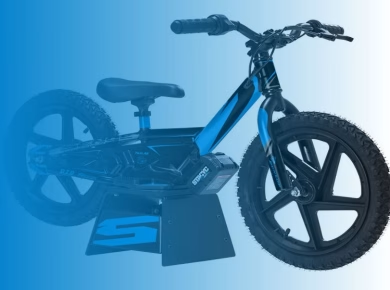When it comes to the world of insulated water bottles, two names frequently come up in discussions: Yeti and Hydro Flask. Both brands have carved out a significant niche among outdoor enthusiasts, fitness aficionados, and anyone who enjoys sipping on a perfectly temperature-controlled drink throughout the day. But which one truly stands out in terms of performance, design, and user experience? In this exploration, we’ll dive deep into the nuances of Yeti and Hydro Flask water bottles, analyzing their insulation capabilities, durability, design aesthetics, and overall functionality.
Understanding Insulation Technology
At the heart of any insulated water bottle is its insulation technology. Both Yeti and Hydro Flask utilize double-wall vacuum insulation, which is designed to keep your beverages cold or hot for extended periods. But what does this mean in practical terms? Essentially, the vacuum layer between the two walls creates a barrier that minimizes heat transfer. This design is crucial for those who want to enjoy ice-cold water during a hot summer hike or a steaming cup of coffee on a chilly morning.
Yeti claims that their bottles can keep drinks cold for up to 24 hours and hot for up to 12 hours. Meanwhile, Hydro Flask markets similar performance, boasting the capability to maintain temperatures for a comparable duration. However, real-world performance can vary based on external conditions, such as ambient temperature and exposure to sunlight. Users often report that both brands perform exceptionally well, though anecdotal evidence sometimes suggests that Yeti’s thicker walls may provide a slight edge in heat retention.
Durability and Build Quality
When investing in a water bottle, durability is a key factor. Both Yeti and Hydro Flask are known for their rugged construction, making them suitable for outdoor adventures. Yeti’s bottles are made from kitchen-grade stainless steel, which not only enhances durability but also resists punctures and dents. Their powder-coated finish adds an extra layer of protection against scratches and wear.
Hydro Flask also employs high-grade stainless steel in their construction, featuring a durable, matte finish that feels nice in hand. Users often praise Hydro Flask for its lightweight design, making it an ideal choice for those who prioritize portability during long treks. While both brands are built to withstand the elements, some users have reported that Yeti bottles tend to be slightly heavier, which could factor into your decision based on your specific needs.
Design and Aesthetics
Let’s talk about design. Both Yeti and Hydro Flask offer a range of colors and sizes to suit different preferences. Hydro Flask, in particular, has gained popularity for its vibrant color palette, appealing to a younger demographic that appreciates a splash of personality in their gear. The company has also introduced limited edition colors, which can create a sense of exclusivity for fans.
On the other hand, Yeti’s design language leans towards a rugged, utilitarian aesthetic, often appealing to outdoor enthusiasts who appreciate a more robust look. Their branding is straightforward, reflecting a no-nonsense approach to functionality. While both brands prioritize form and function, your choice may ultimately come down to personal style—whether you prefer the vibrant, playful colors of Hydro Flask or the rugged, earthy tones of Yeti.
Cap and Lid Functionality
A water bottle is only as good as its cap. Both Yeti and Hydro Flask feature user-friendly designs, but they differ in execution. Hydro Flask’s Flex Cap is a favorite among many users, thanks to its convenient carry loop and easy-to-use design. This cap allows for quick access to hydration, whether you’re on the go or enjoying a leisurely hike.
Yeti, however, offers the Chug Cap, which has gained popularity for its ability to facilitate quick sips without unscrewing the entire lid. This cap is particularly beneficial for those who are active and need to hydrate quickly. Some users have expressed a preference for one cap over the other based on their hydration habits, so it’s worth considering how you plan to use your bottle when making your choice.
Price Point Comparison
Price is often a significant consideration when choosing between Yeti and Hydro Flask. Generally speaking, Yeti products tend to be priced slightly higher than Hydro Flask, which can be a deciding factor for budget-conscious consumers. However, many users justify the higher price for Yeti by citing its exceptional durability and performance.
Hydro Flask, on the other hand, offers a range of products at varying price points, making it accessible for a broader audience. The brand often runs promotions and discounts, which can be appealing for those looking to snag a deal on a high-quality insulated bottle. Ultimately, your budget may guide your choice, but it’s essential to weigh the long-term investment of performance and durability against the upfront cost.
User Experience and Customer Satisfaction
User experience plays a significant role in the decision-making process. In online reviews, both Yeti and Hydro Flask generally receive high marks for performance and durability. Customers frequently highlight how both brands keep their drinks at the desired temperature over extended periods, which is often the primary goal when purchasing an insulated bottle.
Hydro Flask users often appreciate the brand’s commitment to sustainability, as many of their products are made from recycled materials. This eco-friendly approach resonates with consumers who are increasingly conscious of their environmental impact. Meanwhile, Yeti users often rave about the brand’s customer service and warranty policies, which can provide peace of mind when investing in a premium product.
Real-Life Applications and Use Cases
To better understand how these bottles perform in real life, let’s consider some common scenarios. For hikers venturing into the wilderness for a full day, having ice-cold water is essential. Many who have tested both brands report that both Yeti and Hydro Flask perform admirably under these conditions, keeping water cold throughout the day despite exposure to the sun.
For those who prefer a warm beverage during winter sports, both brands deliver reliable heat retention. Users have shared experiences of sipping hot cocoa from their Yeti or Hydro Flask bottles hours after filling them, a crucial feature for anyone spending long periods in cold conditions.
Final Thoughts: Which One Should You Choose?
So, which brand should you choose: Yeti or Hydro Flask? The answer largely depends on your personal needs and preferences. If you prioritize rugged durability and a more utilitarian design, Yeti may be the better choice for you. On the other hand, if you lean towards a lighter design and a vibrant aesthetic, Hydro Flask could be the way to go.
Both brands have their strengths, and either option would serve you well in keeping your beverages at the right temperature. It’s worth considering what aspects matter most to you—whether it’s weight, price, design, or specific features like cap functionality. Ultimately, the best insulated water bottle is the one that fits seamlessly into your lifestyle, enhancing your hydration experience wherever your adventures take you.
In conclusion, both Yeti and Hydro Flask offer exceptional insulated water bottles that cater to a wide range of users. By evaluating your priorities and preferences, you can confidently choose the right bottle for your hydration needs. Whether you opt for Yeti’s rugged performance or Hydro Flask’s colorful appeal, you can rest assured that you’ll be well-equipped for whatever your day holds.




